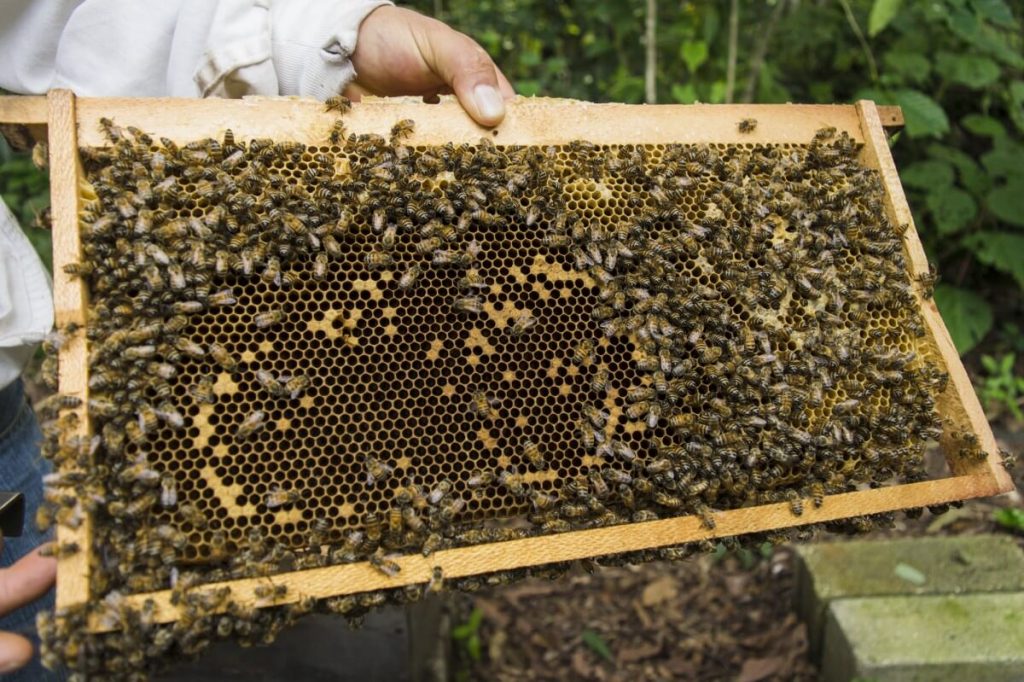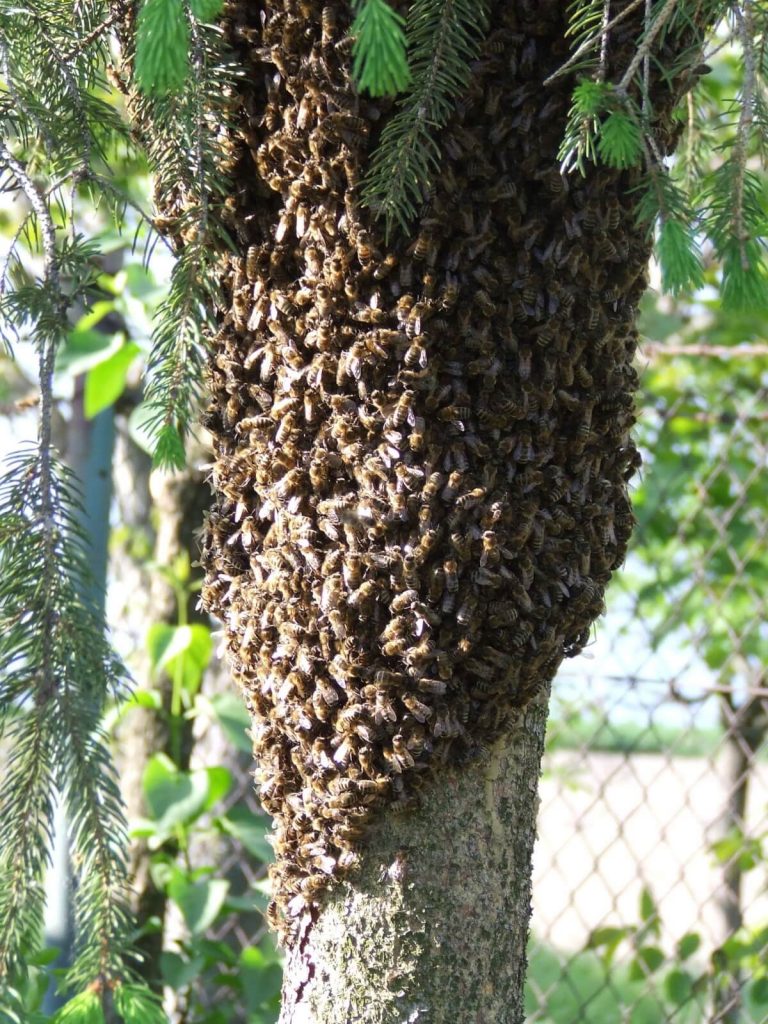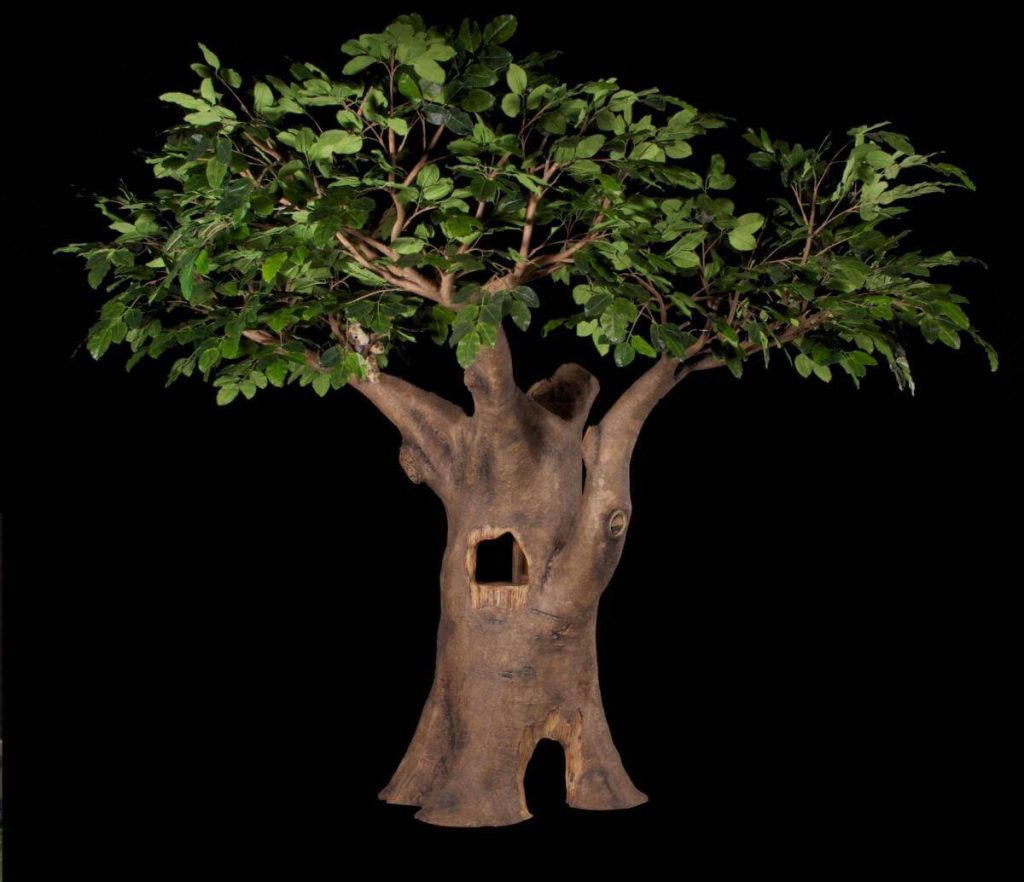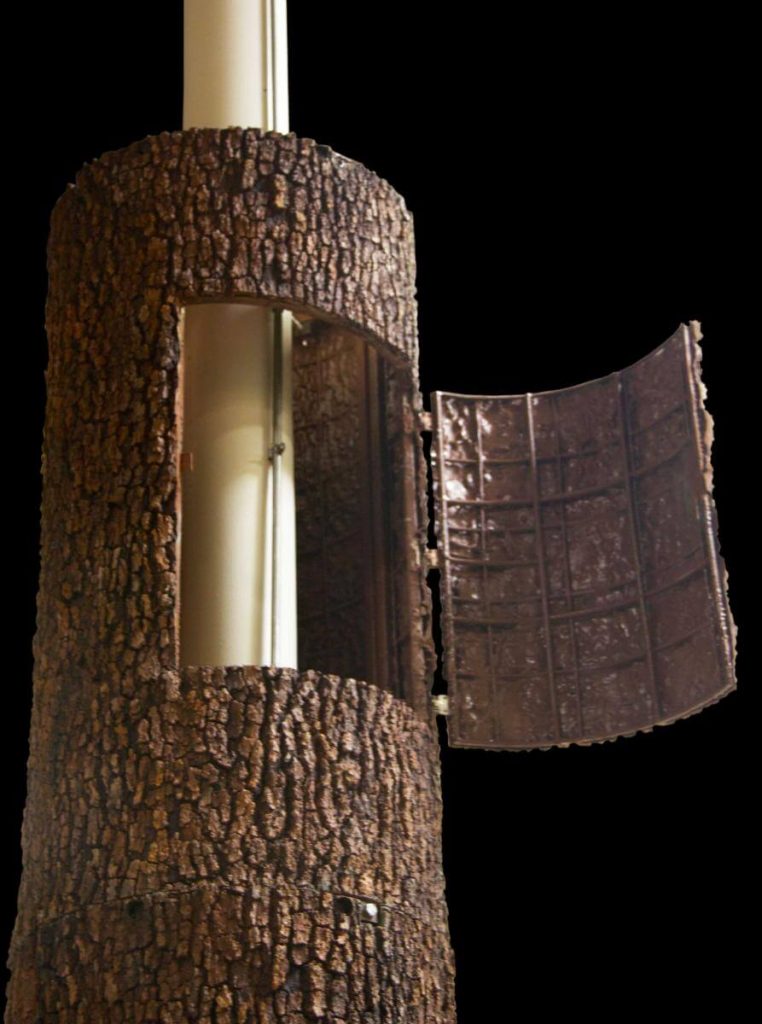Can Fake Outdoor Trees Help Save Honey Bees?
A Facebook fan recently suggested that our fake outdoor trees could help the declining honey bee population. He commented on an article about how man-made honey bee hives are based on an old design, and they’re not the best environment for bees to thrive:
Despite the importance of nests to honey bees, the hives we build them bear little resemblance and have few of the properties of the natural tree nests European honey bees evolved with. In the 21st century, we’re still using hives designed in the 1930s and 1940s, based on ideas from the 1850s. Natural nests were only scientifically surveyed as recently as 1974 and research into their physical properties only began in 2012.
–To Save Honey Bees We Need to Design Them New Hives
John W. on Facebook said:
“…We have been creating artificial trees for decades…. They could easily be modified to suit the design parameters that are described in this article. A company like International TreeScapes, LLC are world wide leaders and could do this as a student design project….”
After that comment, we had to look into the matter further. We admit it never occurred to us that fake outdoor trees could help the bees! It may be a real possibility, though. It’s definitely a worthwhile endeavor:
“Managed honey bees are the most valuable pollinators in terms of agricultural economics. These hyper-efficient insects can provide pollination to virtually any crop.
Almonds, for example, are almost entirely dependent upon honey bee pollination. Without honey bees, the harvest of blueberries, squash, watermelon, and other fruits would be greatly reduced, driving up prices and disrupting the marketplace.”
– The Value Of Pollinators To The Ecosystem And Our Economy
Man-made hives lack properties that honey bees prefer in their natural environments. The artificial hives are shorter and wider than those in nature, and they have large entrances that allow beekeepers to reach the bees and honey.
Current methods of beekeeping are helping to spread a devastating parasite known as Varroa Destructor. Honey bees need high humidity environments, but the parasite prefers the low humidity environments found in man-made hives.
Honey bees prefer tree hollows that offer tall, narrow space, and a small entrance near the bottom. This helps to keep the hot air inside the hive, giving them the humidity that they need.
The bees then “strip off outer layers of bark to smooth the walls, then seal and coat them with propolis or ‘bee glue’ made from tree and plant resins in preparation for building wax honeycombs.” – Types of Natural Beehives
TreeScapes can easily design and create fake outdoor trees that have the dimensions and features that appeal to honeybees. We already create specialty products, like treehouses and cat trees for pets, so why not bee trees? The challenging part would be making these spaces accessible to beekeepers.
We currently lead the industry in the use of faux trees, plants, and hedges to hide electrical equipment, conceal structural elements, and provide discrete storage. These designs could be modified to meet the beekeeper’s needs.
Another option is to create these trees solely for the purpose of rewilding honey bees. The main purpose would be to increase natural honey bee populations. Beekeepers could then harvest the honey once the colony moves on or dies naturally.
California apiculturist Michael Thiele is doing just that:
Thiele’s method consists of hollowing out logs and strapping them high on tree trunks to mimic bees’ hives before they were domesticated. He also sometimes suspends them from barn rafters or perches them high on wooden tables for a similar effect.
– ‘Rewilding:’ One California Man’s Mission to Save Honey Bees
We’re still considering the best ways to accomplish this, and we welcome your feedback! What design would you use for fake outdoor trees to help save the honey bees?




